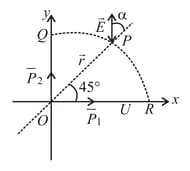
For a system of two dipoles and as shown in the figure (both are at origin and perpendicular to each other along and -axes, respectively) and ) denotes magnitude of and is quite large in comparison to dimensions of dipoles, is resultant electric field and is a quarter of circle whose centre is at ).

on .
Important Questions on Electrostatics
Determine the electric dipole moment of the system of three charges, placed on the vertices of an equilateral triangle, as shown in the figure:
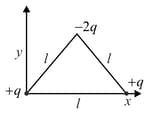
Two ideal electric dipoles and , having their dipole moment and respectively are placed on a plane with their centres at as shown in the figure. At point on the axis of dipole , the resultant electric field is making an angle of with the axis. The ratio of the dipole moment of and is take

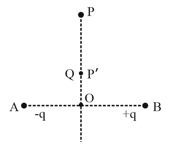
Two charges and are placed at points A and B separated by a distance of . Find the electric field at a point P on the perpendicular bisector of AB, at a distance of from its mid-point.
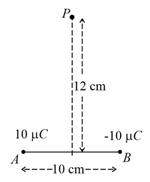
Derive an expression for electric field intensity due to an electric dipole at a point on its axial line.
5 marks
Define electric dipole moment. Give its unit.
A dipole is placed in an electric field as shown. In which direction will it move?
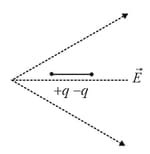
The magnitude of electric intensity at a distance from the centre of an electric dipole along its axial line is . The distance of the point from the centre of the electric dipole along its equatorial line at which the electric intensity has the same value is:
Derive an expression for electric field intensity due to an electric dipole at a point on its axial line.

